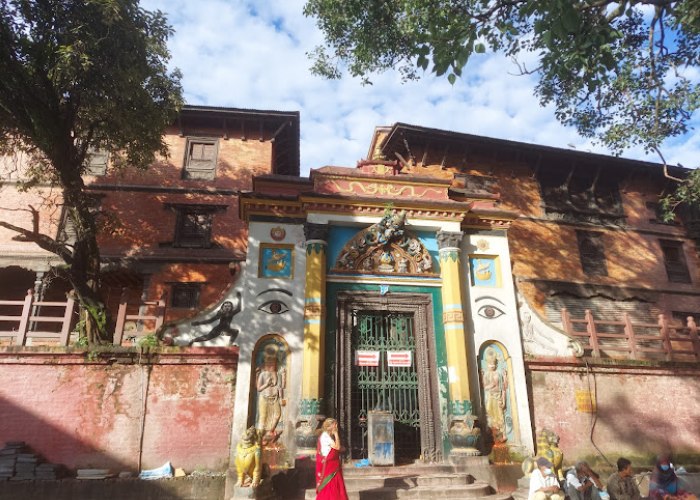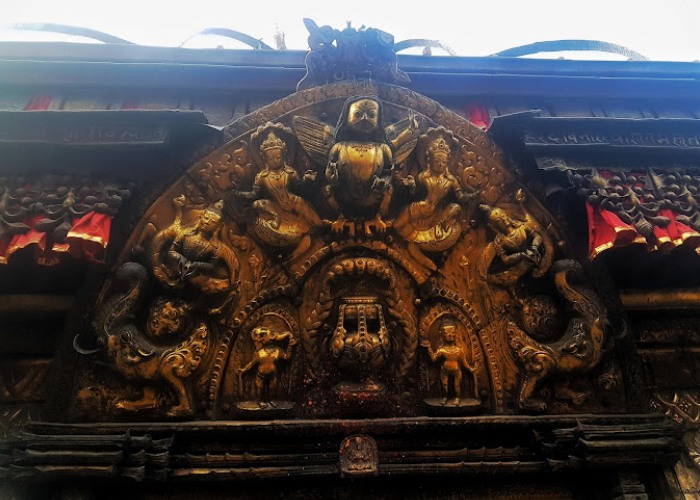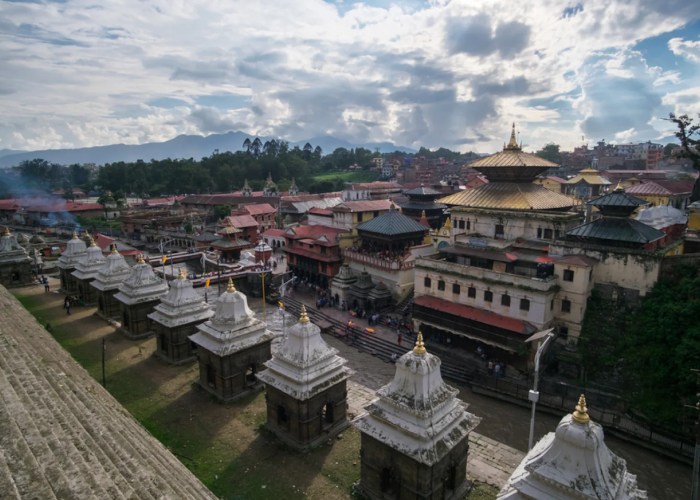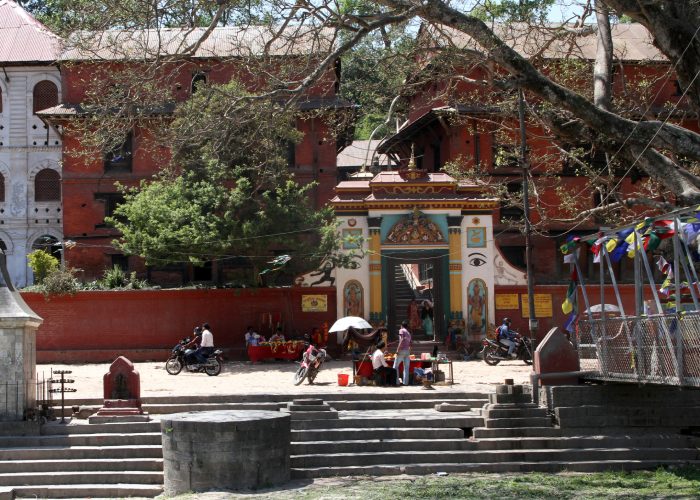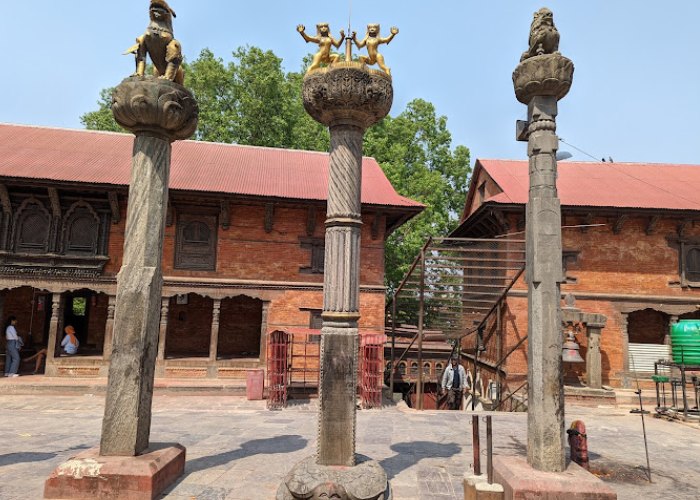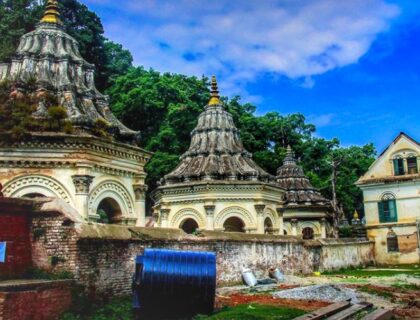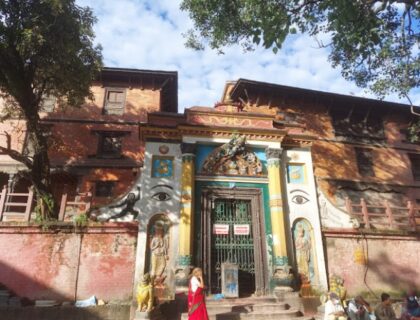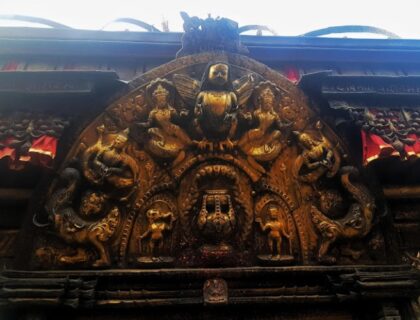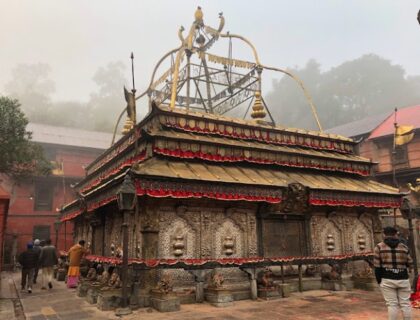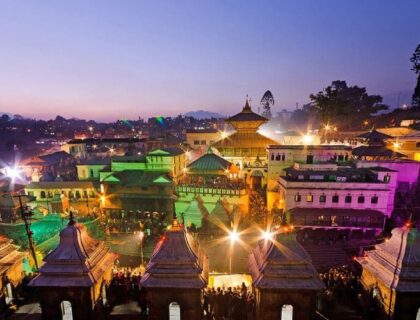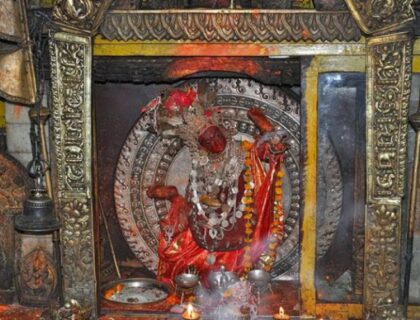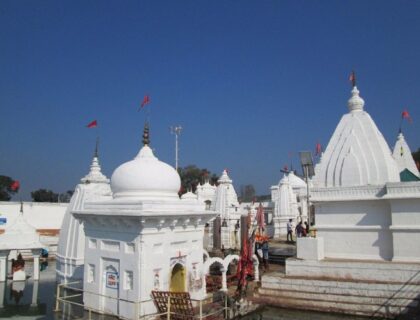Guhyeshwari Shaktipeeth
Guhyeshwari Shaktipeeth also Known as Guheswari or Guhjeshwari, located in Kathmandu ( Nepal) is among the most revered holy temples. This temple honours Guhyeshwari, also known as Adi Shakti. The temple is also a Shakti Peetha and is located on the southern bank of the Bagmati River, about 1 km east of Pashupatinath Temple in Kathmandu, Nepal.
This temple is supposed to be the Shakti chair of Pashupatinath Temple. It is a popular pilgrimage site for Hindus, particularly Tantric worshippers. In the 17th century, King Pratap Malla rebuilt this temple. Guhyekali is another name for the deity. This temple is among the 51 Shaktipeeth Temples.
Story Behind Guhyeshwari Shaktipeeth
The goddess of Dakshayani, Sati, Parvati, or Durga—Hinduism’s most important woman and most powerful deity—is called Shakti. Durga Devi, Mahakali, and Gowri are the three main manifestations of Shakti, the power goddess. She is Adi Shakti’s avatar.
Sati was the Prajapati Daksha’s daughter, and she married Lord Shiva despite Her father’s wishes. Prajapati Daksha once put together a massive yagya, but he didn’t call his daughter and son-in-law. Sati was very saddened by Her father’s actions. When she got there, her father ignored the Sati and insulted her. She could not bear the insult of his husband (Lord Shiva) and she jumped into the fire of Yagya and committed suicide. She passed away, but her body didn’t burn.

Lord Shiva had taken His Virabhadra Rupa out of rage. Daksha’s head was cut off by him, but in the end, He forgave him by bringing him back to life. Lord Shiva, devastated, had taken Sati’s body and wandered the universe. Finally, Lord Vishnu used His Chakra to break Sati’s body into pieces. Each body part transformed into Shakti Pitha. The temple had emerged where the body part had fallen to the ground. In order to safeguard the Shakti Pitha, Lord Shiva created 51 Bhairava for each one.
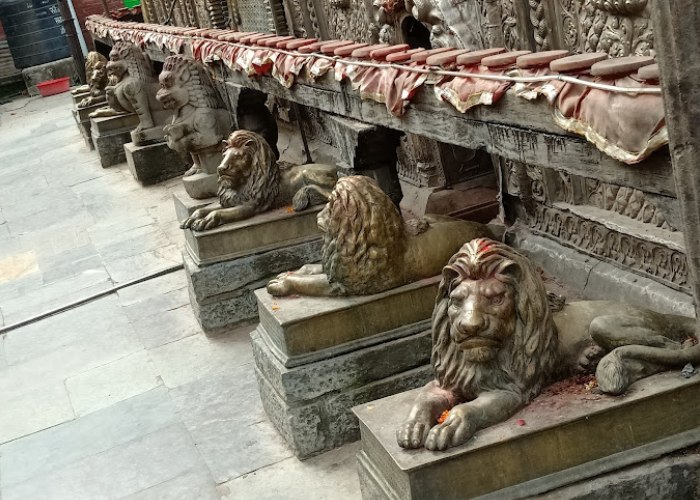
The name of the temple is derived from the Sanskrit terms Guhya (secret, hidden, or cave) and Ishwari (goddess). The name “Guhyeshwari” literally means “the goddess of the cave,” and its origins are linked to the Hindu tradition of Sati, her self-immolation when she transforms into Adishakti, the Goddess of cosmic energy, during the Daksha yagna. It is said that Goddess Sati’s knees fell here, prompting the construction of this temple a couple of hundred years ago.
History of Guhyeshwari Shaktipeeth
The temple is also recognised as one of the most important venues for attaining tantric power in the sacred writings of Kali tantra, Chandi tantra, and Shiva tantra Rahasya. The Vishwaswarup of the deity Guheshwori depicts her as a multicoloured deity with numerous hands. Because it is situated above seventeen cremation grounds, the temple holds divine feminine energy force and is regarded as the most powerful tantra peeth.
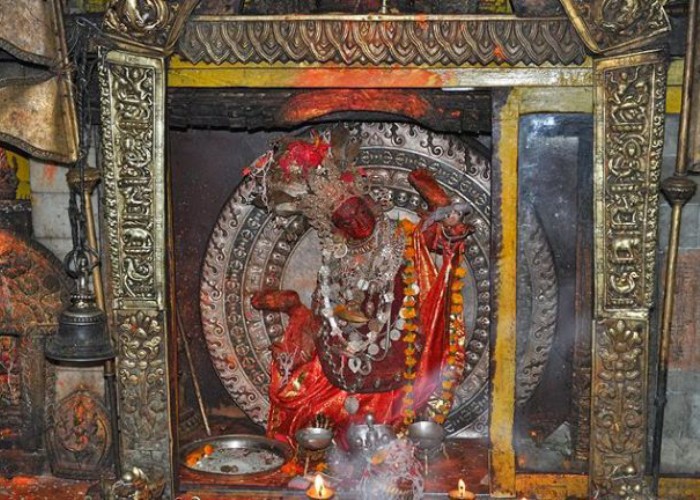
Guhyeshwari Shaktipeeth dates back around 2500 years. A Shaktipeeth was created wherever the bits of Sati’s body, garments, or jewellery landed, according to the Hindu Puranas. These are known as pilgrimage holy places. These pilgrimage sites can be found all over the Indian subcontinent. The 51 Shakti Peeth are described in the Devi Purana. The temple was established in the 17th century by King Pratap Malla. Following this, the ninth king of Kantipur repaired the temple and rebuilt it in the Pagoda style.
The architecture of Guhyeshwari Shaktipeeth
Guhyeshwari Temple appears to be exceedingly attractive, and it is built in the Bhutanese pagoda style. Though the temple’s outside is basic and unappealing, the interior is lavishly embellished with flower themes and structures. It has a flat figure parallel to the ground that is worshipped by kneeling down instead of a standing figure of the Goddess.

The Bhairav Kunda pond is located next to the heavenly figure. The goddess is worshipped in the centre of the temple in a silver and gold-plated kalasha (water jug). Devotees put their hands into the pond, and whatever they get is regarded as holy and accepted as a divine blessing.
Facts about Guhyeshwari Shaktipeeth
- Guhyeshwari Shaktipeeth is one of the 51 Shakti Peethas of Goddess Sati. The temple is situated on the other side of the Bagmati River near Pashupatinath temple.
- The presiding goddess of the temple is known as ‘Guhekali.’ It is one of the UNESCO World Heritage Sites in Kathmandu.
- The temple’s name originates from the Sanskrit words Guhya (secret, hidden, or cave) and Ishwari (goddess).
- In Guhyeshwari Temple, the Shakti is Mahashira and the Bhairava is Kapali. The goddess is worshipped at the centre of the temple in a kalasha (water jar) that is covered with a layer of silver and gold.
- The divine energies temple of Sati and Shiva have dwelled in the form of ‘Mahamaya’ or ‘Mahashira’ and ‘Kapali,’ respectively.
- The temple possesses divine female energy force and is considered the most powerful full tantra peeth as it is built above seventeen cremation grounds.
- It is a popular pilgrimage destination for Tantric worshippers.
- The temple is also mentioned in other sacred writings, including the Shiva Tantra, Kali Tantra, Chandi Tantra, and Rahasya. The temple is ruled by a mystical female power force.
- The Newar community performs various pujas at Guhyeshwari Temple. Newari Bhoj (feast) is also held at the temple during festivals.
- While visiting these temples, the Guhyeshwari Temple is visited before the main Pashupatinath Temple. The Guhyeshwari Temple is worshipped first and then other temples are visited.
Festivals In Guhyeshwari Shaktipeeth
- Durga Puja. (Winter) – Devotees celebrate Navaratri at this temple in the month of Ashwin (Sep-Oct).
- Navaratri. (Summer) – They celebrate other Navaratri in the fortnight of the Chaitra (March-April). Every nine days they worship Navadurga (nine Durgas).
- Diwali – Diwali is one of the most admired and auspicious festivals in the town.
- Mahashivratri– A grand fair is organized at the temple during the occasion of Maha Shivratri.
- Dashain (The great harvest festival of Nepal, Dashain is a time for family reunions, exchange of gifts and blessings, and ornate pujas. )
- Guhyeshwari Fair (November)
- Guhyeshwari Yatra is a celebration that includes a tour that begins in Guhyeshwari and ends at Hanuman Dhoka in Basantapur. This custom has existed since ancient times.
How to Reach Guhyeshwari Shaktipeeth
The temple is situated on the other side of the Bagmati River near Pashupatinath temple in Kathmandu, Nepal.
By Air: The best way to reach Guhyeshwari temple from India is by taking a flight to Kathmandu. Tribhuvan International Airport is almost 5 km away from the main city.
By Railway: There is no direct train link between the two countries. The most likely route for you to take by rail from Delhi to Kathmandu is via Gorakhpur.
By Roadways: From Kathmandu, you can take a bus or a car to the temple. Travelling by road takes at least 1 hour.
Also, Read – Chandrabhaga Prabhas Shaktipeeth
Location
Facilities
- Drinking Water
- Pooja Item Shops
- Prasad Shops
- Restaurants Nearby
- Resting Room




